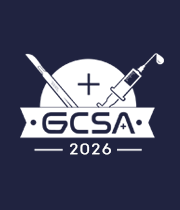Pediatric Anesthesia and Sedation
Children present unique physiological, psychological, and pharmacological considerations that require a highly specialized anesthetic approach. Pediatric anesthesia and sedation encompasses strategies that prioritize safety, comfort, and developmental sensitivity. From airway management in neonates to dosage calculations in adolescents, every step must be finely calibrated. Non-pharmacologic techniques, including parental presence and distraction methods, often complement pharmacological sedation to minimize anxiety and trauma. Technological advances like depth-of-anesthesia monitors adapted for children and age-specific ventilatory settings support greater intraoperative precision. Anesthetic agents with rapid onset and clearance profiles are preferred to allow smooth, fast recoveries. Additionally, growing emphasis on neurodevelopmental outcomes is prompting research into the long-term effects of sedatives on young brains. The evolving landscape of pediatric care demands anesthesia protocols that are as dynamic and individualized as the patients themselves.



Title : Spontaneous colonic perforation in a pediatric patient with acute febrile lllness: A case report
Abhiraj Yadav, Manipal College of Medical Sciences, Nepal
Title : Unusual cause of small bowel obstructions in infants: A warning letter to parents
Gamal Al Saied, Al-Azhar University, Egypt
Title : From panic to protocol: A ?IP on developing a paediatric breast referral pathway
Neriah Mangion, University Hospital Sussex NHS Foundation Trust , United Kingdom
Title : Improving scrotal examination in male patients presenting with acute abdominal pain: An audit and quality improvement intervention
Maab Elsaddig, University Hospital Lewisham, United Kingdom
Title : Mapping pediatric general surgery training in low and middle income countries: A scoping review
Habba Mahal, University of Alberta, Canada
Title : Improving implementation of enhanced recovery after cesarean section protocol in resource limited setting of Koidu Government Hospital Sierra Leone 2024/25. A quality improvement project from evidence to reality
Hailemariam Getachew, PIH, Sierra Leone